Speckled Sussex Chickens are a beautiful sight and much more. Here’s everything you need to know about this breed of chickens!
Speckled Sussex chickens have wonderful, inquisitive, and “big” personalities, not to mention the beautiful “speckles” on their feathers! Ours willingly sit on our laps or take treats from our hands – they’re the perfect pet chicken!
But they are also a very hardy and quite productive heritage breed that is regaining popularity. If you’ve been considering adding any backyard chickens to your coop, read on to learn about this wonderful breed!
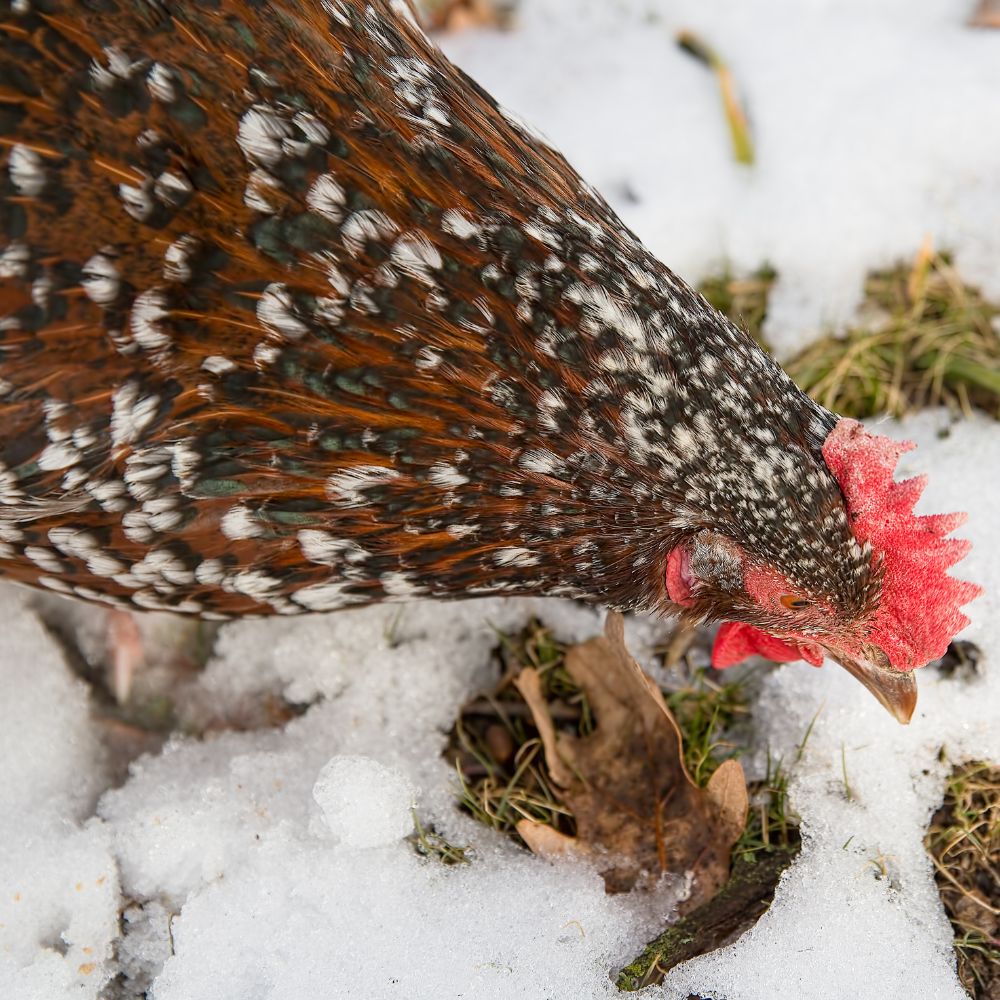
Table of Contents (Quickly Jump To Information)
Speckled Sussex Breed Characteristics
Sussex chickens have historically been raised by chicken keepers as a dual-purpose breed (for both eggs and meat), although many people today raise them as beautiful pets. There’s a standard-sized chicken and also a bantam variety. Can you imagine how adorable the bantam variety is?
This breed of chickens, as it exists today, has been around since the mid-1800s, and originated in the county of Sussex, England, hence the name of the breed.
While each color variety has its own individual influences, the Sussex chicken is largely influenced by Brahmas, Cochin, and Dorking, among other breeds.
Roosters can weigh up to 8 pounds while hens weigh about 6 pounds.
Colors
While there are three different color varieties of the Sussex chicken that the American Poultry Association recognizes, the speckled coloring is the oldest and most popular.
Speckled Sussex hens have reddish brown feathers (which is referred to as mahogany) with black and white “speckling” which gives the breed its name. Each feather has a white tip, and the number of speckles varies from chicken to chicken.
Its plumage color is a delight to the eye being of rich mahogany base color with individual feathers ending in a white tip separated from the rest of the feathers by a black bar. Baby chicks vary greatly in color from a creamy buff to dark chestnut and some also have alternate dark and light stripes lengthwise on the back.
Quote from McMurray Hatchery’s website
The Speckled Sussex rooster can have green in its feathers as well!
In Britain, 8 color varieties are recognized for the Sussex breed, including the Coronation Sussex, which was developed to celebrate the coronation of Edward VIII (who abdicated the British throne, so the coronation never took place).
Appearance Details
Other than colors, there are some details you may be interested in. A Speckled Sussex chicken has a single comb, as well as red wattles and ear lobes.
Their eyes are an orange color and they sport a beak described as horn-colored (sort of ivory, gray, and often a little black).
While their feathers are fancy and full of life (in regard to their colors and speckles), their legs and feet are white…well, perhaps in reality they are off-white.
Egg Production
Speckled Sussex hens lay about 260 light brown eggs per year, and are consistent layers. The size of the egg depends on the hen; ours lay medium-sized eggs.
To ensure your Speckled Sussex hen lays healthy eggs, feed a quality layer feed and provide plenty of calcium supplements!
You can also add herbs to her nesting box to help her feel comfortable laying (while providing pest control and other health benefits).
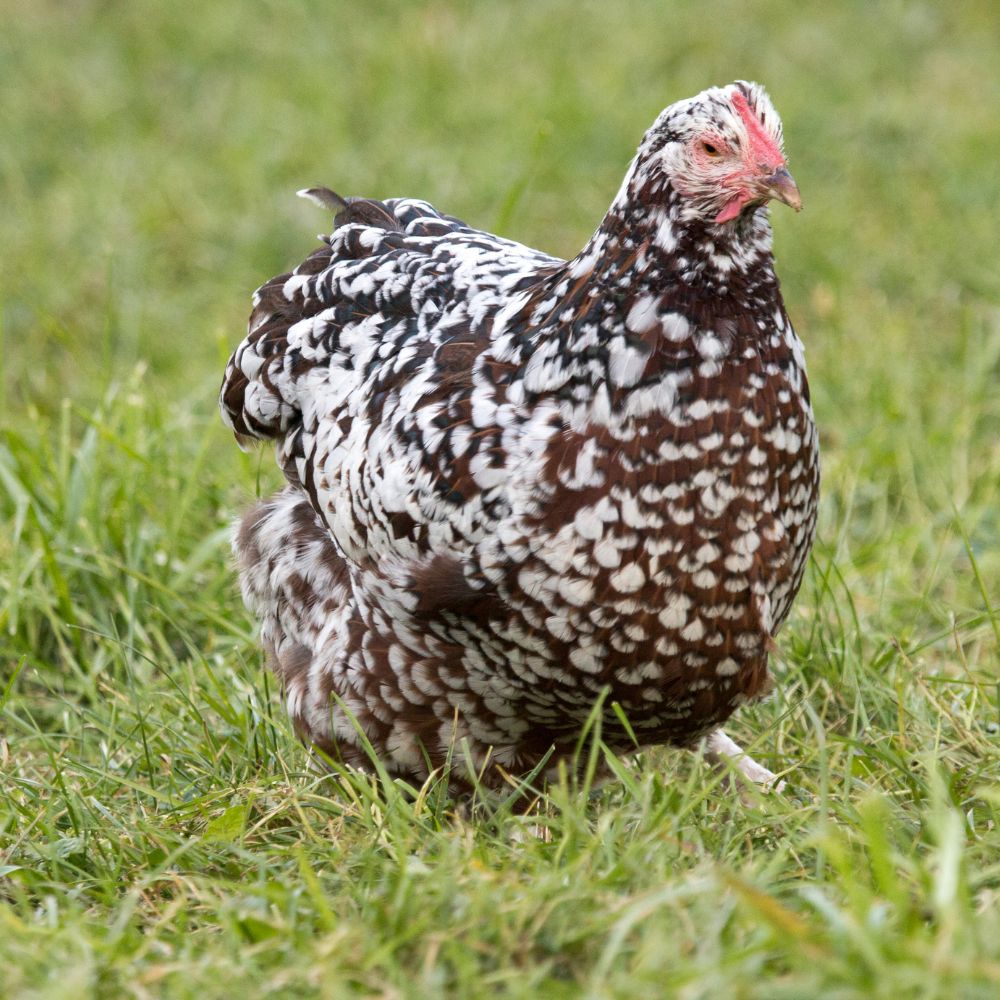
Are Speckled Sussex Chickens Hardy
They are a heritage breed, which means they pretty much had to be hardy to survive long ago before all the modern care conveniences. Likely the only reason this breed is not necessarily on the top ten chickens to own list is that like many heritage breeds, commercial hybrids overshadowed them.
They do well in cold weather, and they also handle hot weather like pros. A very well-rounded breed indeed.
Just be sure to provide protection from the elements, as well as predators.
Speckled Sussex Personalities
Speckled Sussex chickens are wonderful to own! They are friendly and docile, but they have “big” personalities, and ours are at the top of the flock. They’re curious, the first to check out new situations, love environmental enrichment, and are intelligent pets.
Speckled Sussex chickens love attention, and love being at the center of the action. If you add one to your flock, you’re sure to have hours of fun watching her interact with other chickens and beg you for treats!
To ensure you have a pet chicken who enjoys human company, it’s important to handle them frequently when they’re chicks. If you want lap chickens, the key is to spend a lot of time feeding them treats.
They don’t require special feed, are docile, and the hens don’t get very aggressive during brooding. The roosters are equally a joy to be around! And don’t forget Sussex chicks, they are so adorable and fun to watch grow.
How to Care For the Speckled Sussex Chicken Breed
- Be sure they have adequate housing – check out these coops
- Provide plenty of fresh water (try warm water in the winter, they love it and it encourages them to drink)
- Feed them high-quality feed (cheap filler feed does their health and production no favors)
- Give them a boost to ward off pests (lice, mites, and other ugly parasites) with MitesBGone Herbal Blend
- Allow them to free-range if possible (they love foraging and it’s good for them)
- If you do have to keep them in confinement, provide them with a good-sized run and lots of treats
Where to Buy Speckled Sussex Chickens
You can buy Speckled Sussex chickens at any major hatchery. They’re a very popular breed! Cackle Hatchery is where we purchased ours, and they were healthy and happy when they arrived!
Maat van Uitert is a backyard chicken and sustainable living expert. She is also the author of Chickens: Naturally Raising A Sustainable Flock, which was a best seller in it’s Amazon category. Maat has been featured on NBC, CBS, AOL Finance, Community Chickens, the Huffington Post, Chickens magazine, Backyard Poultry, and Countryside Magazine. She lives on her farm in Southeast Missouri with her husband, two children, and about a million chickens and ducks. You can follow Maat on Facebook here and Instagram here.

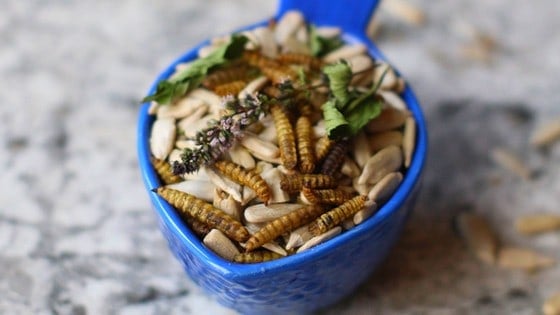
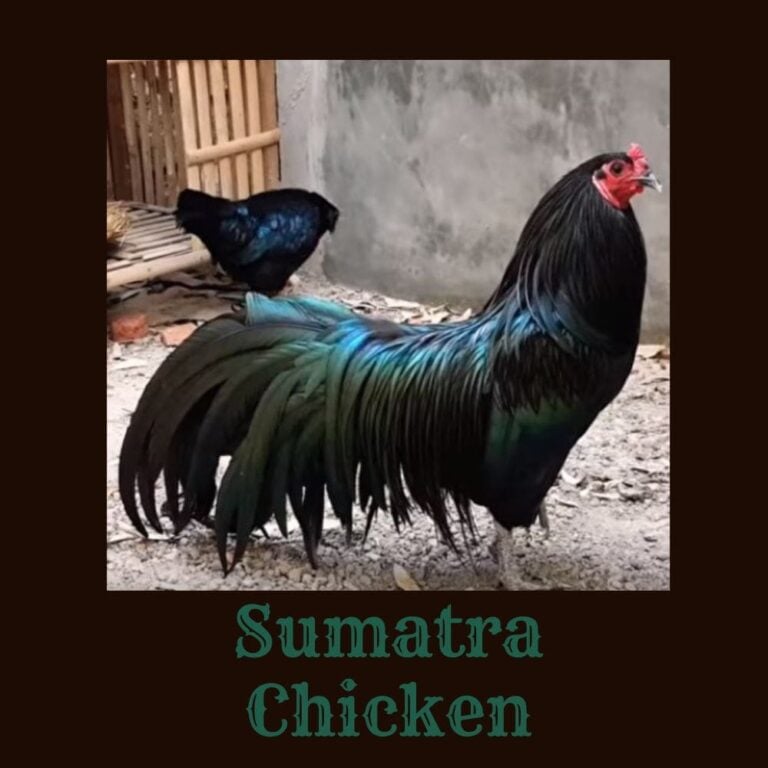
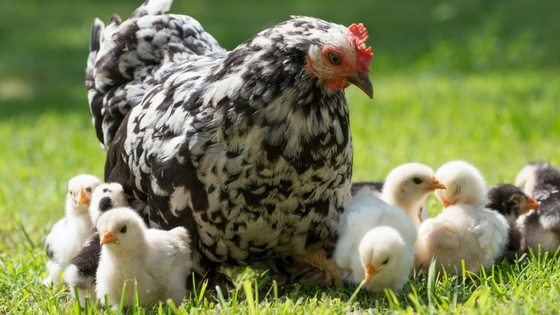

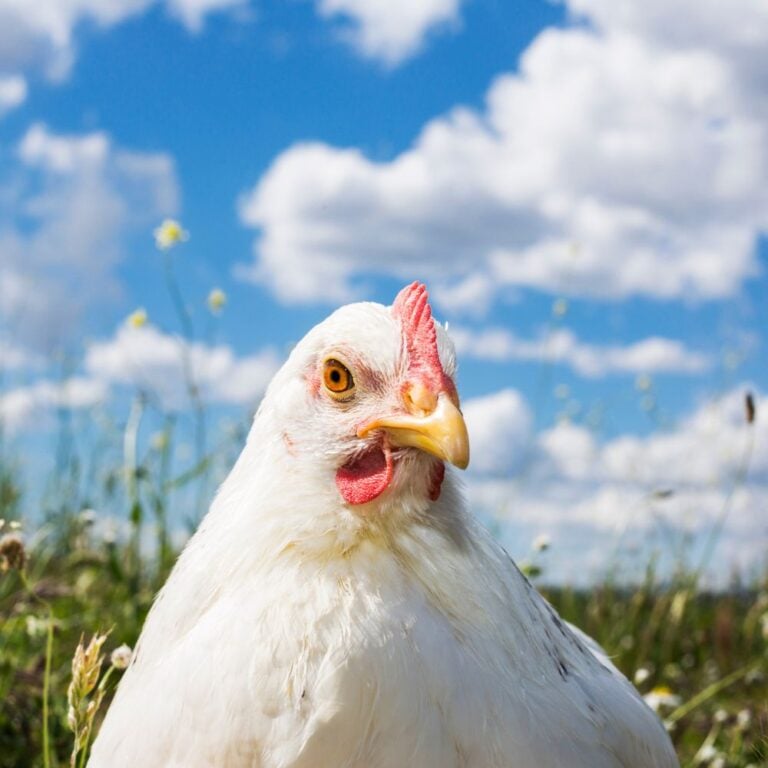
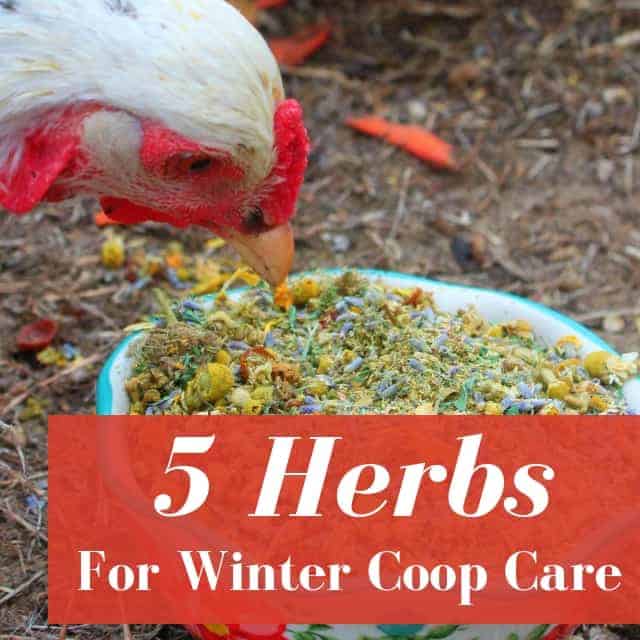
You are right about the breed sussex. Due to the fires in our area a feed yard was trying to find new homes for a couple of them. I took one to add to my urban yard. Dot, her name is so full of character! She’s a good hog! Loves larvae and follows me right to the door wanting more. Get one you’ll love the breed.
That is one of the breeds I ordered for my new backyard flock. I’ve never “chickened” before, so I am starting with four:
Speckled Sussex
Barred Rock
Rhode Island Red
Easter Egger
I can’t wait!
My Suzy is one of my favorite birds! I’ve had her since the beginning of my chicken raising hobby. She is the first to run up and greet me when I go out to the run, and is ALWAYS first in line for treats. She will even jump up and try to knock the bag from my hand so she can get it faster. Love that girl!
Our girl “Speckles” does the same thing.
What beautiful hen’s! I require a breed that doesn’t have aggressive roosters because of my grandchildren. Would these qualify?
I think the Speckled Sussex roosters are great. The personality does depend on the individual rooster though!
We all love our Speckled Sussex who we call Speckles. Everything said in the article is right on the money. She was always the first chick to jump up on my hand when I would put it in the brooder and loved to just sit on my arm and get attention usually in the form of pets. While all my girls have personality, hers by far is the friendliest. When you go for the afternoon treat she will jump right up on your arm to say hello and get first shot at the scratch. If your arm is not accessible she will fly/climb up your back to get to your shoulder or head to see what is taking so long. We thought she was going to be the dominant hen in our flock based on her status in the brooder. She is probably more in the middle. We actually don’t seem to have an alpha female in our flock. We think this is because we have a drake in the mix with his two girls who are more dominant. You will not be disappointed with this breed.